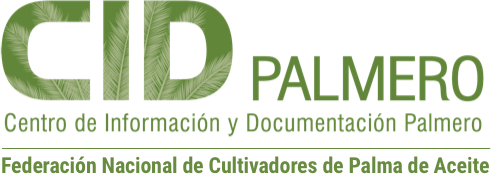Plant-Pathogen-Vector-Environment Interactions in Coconut Lethal Yellowing Disease

Author
Oropeza, Carlos
Zizumbo, Daniel
Sáenz, Luis
Narvaez, María
Córdova, Iván
Estadisticas
Publicación:
Revista Palmas; Vol. 31 Núm. especial, (2010); 388-402
0121-2923
Revista Palmas; Vol. 31 Núm. especial, (2010); 388-402
0121-2923
Abstract
Lethal yellowing (LY) is a very destructive disease that primarily affects coconut (Cocos nucifera) as well as other palm species in parts of the Caribbean region. LY is attributed to phytoplasmas within group 16SrIV comprising several strains. Phytoplasmas are transmitted by sap feeding insects to at least 38 palm species some of which remain symptomless and might serve as protracted sources of inoculum. Two patterns of disease spread have been reported within coconut groves in Jamaica, Florida and Mexico. One pattern is characterized by disease development on one or two palms only at first, followed by the appearance of new nearby cases in a radius equivalent to two palms. As LY progresses, new aggregates form locally that eventually coalesce resulting in uniform distribution of the disease. A second pattern involves a jump spread of a few to 70 km or more. The most effective way to combat LY has been the use of resistant Germoplasm that has been identified in screening trials implemented in different countries. When combined with various cultural practices such as daily monitoring of symptoms, prompt removal and destruction of affected palms and elimination of weeds, satisfactory management of LY seems to be possible. El amarillamiento letal (AL) es una enfermedad destructiva que afecta principalmente al cocotero (Cocos nucífera) y otras palmas en partes de la región Caribe. Se atribuye a fitoplasmas del grupo 16SrIV compuesto de varias cepas. Los fitoplasmas son transmitidos por insectos chupadores a por lo menos 38 especies de palmas, algunas de las cuales permanecen asintomáticas y pueden servir como fuentes prolongadas de inoculo. Se han reportado dos patrones de propagación en plantaciones de coco en Jamaica, Florida y México. Uno de ellos se caracteriza por el desarrollo de la enfermedad inicialmente en solo una o dos palmas, seguido por la aparición de nuevos casos dentro de un radio equivalente a dos palmas, y el otro involucra un salto de la propagación de 70 km o más. La forma más efectiva de combatir el mal ha sido el uso de germoplasma resistente identificado en ensayos de selección implementados en diferentes países. Cuando se combina con varias prácticas culturales, como por ejemplo monitoreo diario de síntomas, oportuna eliminación y destrucción de palmas afectadas, y eliminación de malezas, el manejo satisfactorio de la enfermedad parece ser posible.
Lethal yellowing (LY) is a very destructive disease that primarily affects coconut (Cocos nucifera) as well as other palm species in parts of the Caribbean region. LY is attributed to phytoplasmas within group 16SrIV comprising several strains. Phytoplasmas are transmitted by sap feeding insects to at least 38 palm species some of which remain symptomless and might serve as protracted sources of inoculum. Two patterns of disease spread have been reported within coconut groves in Jamaica, Florida and Mexico. One pattern is characterized by disease development on one or two palms only at first, followed by the appearance of new nearby cases in a radius equivalent to two palms. As LY progresses, new aggregates form locally that eventually coalesce resulting in uniform distribution of the disease. A second pattern involves a jump spread of a few to 70 km or more. The most effective way to combat LY has been the use of resistant Germoplasm that has been identified in screening trials implemented in different countries. When combined with various cultural practices such as daily monitoring of symptoms, prompt removal and destruction of affected palms and elimination of weeds, satisfactory management of LY seems to be possible.
Palabras clave:
palma de aceite
elaeis guineensis
amarillamiento letal
fitoplasmas
cocos nucífera
plantas huéspedes
relaciones huésped patógeno
agentes de control biológico
vectores
palma de aceite
elaeis guineensis
amarillamiento letal
fitoplasmas
cocos nucífera
plantas huéspedes
relaciones huésped patógeno
agentes de control biológico
vectores


